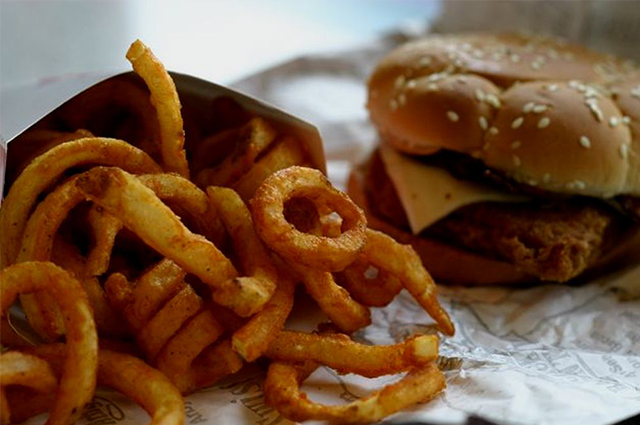Historical
Guide to Fats 7: Trans Fats and Problem Oils
Trans fats: good and evil Cis and trans fatty acids 'Cis' fatty acids are either monounsaturated or polyunsaturated and have a kink in their shape because the hydrogen atoms at each double bond are situated on one side of the bond. This shape renders them liquid at room temperature. 'Trans' fatty acids are straighter in shape (like a saturated fatty acid) because the hydrogen atoms at each double bond are placed on either side of the bond. This shape renders them solid at room temperature. There are two kinds of trans fatty acid: natural and man-made. Good… A study on rats (2008) suggests a diet with enriched levels of natural trans vaccenic acid (VA) found in beef and dairy products can reduce risk factors associated with heart disease, diabetes and obesity, supporting evidence that natural, animal-based trans fat is different to harmful man-made trans fats. A review in 2011 seems to bear this out. …versus evil Man-made trans fats are the subject of labels screaming 'Zero trans fats!' Trans fats are made by bubbling hydrogen through hot, unsaturated (omega-6-rich) vegetable oil. Saturating, or partially saturating, the carbon chain with hydrogen atoms un-kinks the double bonds, creating solid fats with a long shelf life used in processed foods to extend the sell-by date. As nothing can control exactly where the hydrogen atoms land, the process – called hydrogenation or partial hydrogenation – creates fatty acid shapes not found in nature. Trans fats displace but cannot replace the unprocessed omega-3 and -6 fatty acids we need to function properly. They also inhibit an enzyme required to convert essential fatty acids into forms our bodies can use, thereby escalating EFA deficiency. So, while our bodies can use them for energy to some extent, research has shown these funky fats contribute to heart disease, cancer, diabetes, obesity and immune system, reproduction and lactation problems because they are unable to fulfil the deeper roles fatty acids play. Bad but hard to avoid (Partially) hydrogenated margarine and vegetable shortening are pure trans fat. They are found in fast foods, processed foods (including some health-food brands, though the little rotters are barred from The Hopsack) and unlabelled, shop-bought baked goods. Even foods claiming 'zero trans fats' are permitted to contain small amounts in certain countries… The only way to avoid trans fats is to cook from scratch using natural fats and cold-pressed oils. Potential problem oils In The Paleo Diet (revised edition, 2011), Loren Cordain argues that peanut oil, soya bean oil, wheat germ oil and rapeseed oil are detrimental to health. Peanut oil is used in animal experiments to clog arteries. There is some evidence to suggest that peanut lectins (proteins that bind to carbohydrates) may be responsible for this effect. Soya bean oil and wheat germ oil also contain lectins. The WGA lectin in wheat germ oil has been widely studied and found damaging to health. Rapeseed oil contains too much erucic acid, a fatty acid harmful to heart health. Even Canola oil, a rapeseed oil pressed from seeds bred to minimise erucic acid, has been shown in animal experiments to effect myriad pathological changes. [Dr Ohara and colleagues at the Hatano Research Institute in Japan (2006, 2008, 2009); Dr Poiikonen and colleagues at the University of Tampere, Finland (2006, 2009)] Go to… Guide to Fats 1: Introduction Further reading Articles by University of Illinois emeritus veterinary biosciences professor Fred Kummerow on trans fats: see www.sciencedaily.com Loren Cordain, The Paleo Diet (revised edition), New Jersey, 2011




